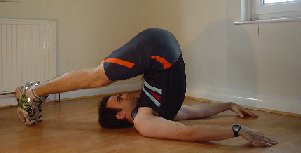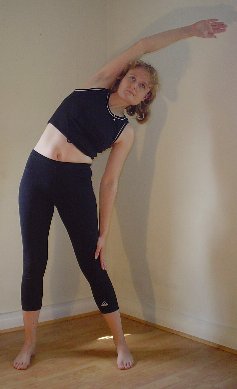Different Types of Stretching
Stretching promotes increased mobility (range of movement) and helps with injury prevention.
There are four different types of stretch that can be performed, each having a specific task or goal that it is trying to achieve for the athlete.
Remember, stretching should not be painful - just stretch to the point of tension gently, and then hold that position for the required time. Muscles need to be warm before you do stretches, regardless of the type of stretch to be done. The muscle fibre coating (collagen) will inhibit the stretch if the muscle isn’t warm. Relaxation throughout the body will make stretching easier, and therefore more comfortable.
Please use the links within the page to view the different specific stretching exercises
Types of Stretches
Static Stretches
These are probably the most well-known, mainly because they benefit from being both effective and safe. Simply place the body in the required position and hold it there for the desired amount of time.

Photo
Passive Stretches
This increases the range of movement through an external force, e.g. a partner, walls or floor. These stretches can be very useful in the development of stretching, but care must be taken to ensure the stretch is not forced - it should remain within the realms of comfort at all times.
Dynamic Stretches
These stretches use some momentum, for example leg swings. You have less control during this type of stretch, but if done gently then they are very good at replicating the movement of the exercise you are to undertake. These are the stretches of choice before a training session.
Video Hamstring Walks.
Ballistic stretching
Ballistic stretches involve forcing swings or movements and are not as useful for running - they are probably most relevant to sports such as gymnastics.
Stages of stretching
Preparatory
Warm Up stretches. During a warm up we are preparing the body for the exercise to be undertaken. We need to perform exercises that put our muscles through the range of movement that they will go through during the main training session. Dynamic stretches are the ones to use here.
Maintenance
Warm down stretches. These take the muscles back to their pre-workout length, as some shortening will have occurred during activity. Many athletes are tired after a session and don’t stretch - it is, however, VERY useful to do so. A suggestion would be to reduce the number of stretches performed to concentrate on the most major and injury-prone muscles to ensure that these are cared for. These static stretches should be held for significant periods of time (about 20-30 seconds).

Photo Side stretch.
Developmental Stretches
From time to time athletes realise that their mobility isn’t as good as it should be (this is generally true for most athletes all of the time). Development stretching is used to increase flexibility in areas of need, such as hamstrings and hip flexors. Stretch to the point of tension, hold for a few seconds. Then, when the tension eases, stretch a little further. Total time for stretch = 30 seconds to 1 minute, occasionally even longer (up to 2 minutes).
Important Note
You should never force a stretch. Go to the point of tension and hold for the required duration. For safety ensure your knees and feet are pointing in the same direction, and avoid “locking” either your elbows or knees straight.
